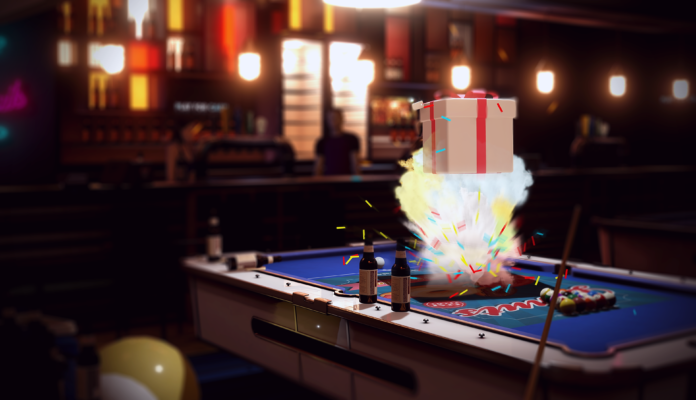Ready Player One has caused a pretty big stir in the VR community, the gaming community and those who think like futurists. Surprisingly, all of those concepts converge in tomorrow’s sports bar. Futurism will meet incredible technology to give us insight into sports and provide a play space all at once. Charlie Fink, a former executive for both Disney and AOL, speculates: “Sport will lead the way for cinematic and AR reality…. You’ll be able to go to a bar, use tabletop AR, and project a [football] match. Over the players will float their names and stats, you’ll be able to make their images bigger or smaller.”
It will be an exciting time. It already is an exciting time. Sports leagues are now offering various forms of AR and VR to augment the experience of watching a game in public. Here’s a glimpse of the sports bar of tomorrow.
VR Games
Foosball, anyone? Koliseum is a VR soccer experience where you are the foosball player. You control yourself and can manipulate actions to either stop or kick the ball to score goals. The rules are the same, only the playing field has shifted. This allows the developers to add small effects on goals scored, or trails to the ball as its kicked. Players see a stadium with depth that they have control over.
[youtube https://www.youtube.com/watch?v=U_v8JCouh1I&w=560&h=315]
More affordable and mobile VR options means that the dartboard may become a thing of the past. Add in networked play and loyalty cards from franchised sports bars, and your outing became a nationwide competitive community.
5G VR Streaming
VR sports bars will need to embrace next-level streaming, using 5G connection speeds, if they want to stay relevant in the future. Ultrafast connection speeds provide VR audiences capability to rewind and change angles of live streams, using their own devices.
[youtube https://www.youtube.com/watch?v=IG2j4Pct7LY&w=560&h=315]
Venues might also provide unique experiences. We’ve seen how 5G can relay real-time video with depth and allow a player to catch a ball. Tomorrow’s bar may provide that perspective of play through partnerships with your favorite teams, offering behind the scenes content from practice
AR Stats
MLB, NBA, and NFL all have their own version of AR statistics, and demand is growing. AR is now front and center with NBA and NFL’s VR offerings. MLB’s “At Bat” provides a clear picture of this in practice. Pointing a device toward the game will show fans the player’s perspective at-bat, alongside statistics related to catch percentage, arm strength, and on-base percentages.
AR stats make the games more engaging, especially if the data is meaningful and presented in a meaningful way. Sports talk shows are a great example of how augmented reality and good presentation work together.
The sports bar would act as the host for this kind of content, connecting you, the viewer, to the league for more detailed information. The bar becomes an exclusive portal at that point, connecting you and your favorite teams.
Cinematic Experiences
It’s probably true that something like the Merrell experience isn’t going to offer audiences a lot of replayability. However, VR games and camera angles offer a reason to return to a venue. That’s not just speculation. Arizona Cardinals CEO, [name], talked about how more teams will experiment with VR to create a reason to return to the park. Want to see how you’d do against your favorite pitcher? Could you hit a home run in your hometown ballpark? These are the big league questions VR will tackle at sports bars and stadiums in the next generation.
A much richer fan experience means there’s more for the casual fans to do, and that’s a win for the market as a whole. Even hardcore NBA fans might want to see if they could stop one of those infamous no-look passes LeBron is so famous for.
Sports Bars and VR, a Promising Future
The sports bar and the stadium are both rapidly evolving with new technology. The sports bar is already dramatically different with interactive menus and wristband technology that rations beer. We’re living in the future, and AR is going to become a big part of that. Much of the reason for this shift has to do with the computer in your pocket, AKA the smartphone. Smartphones are mostly VR capable these days, and can easily work with a bar’s application to deliver customized content that you either pay for or receive as part of the bar’s services to you. Don’t expect the rich experience of a Vive or Rift, but do expect to find more reasons to dive into your phone even among friends in the coming few years as sports bars change.


